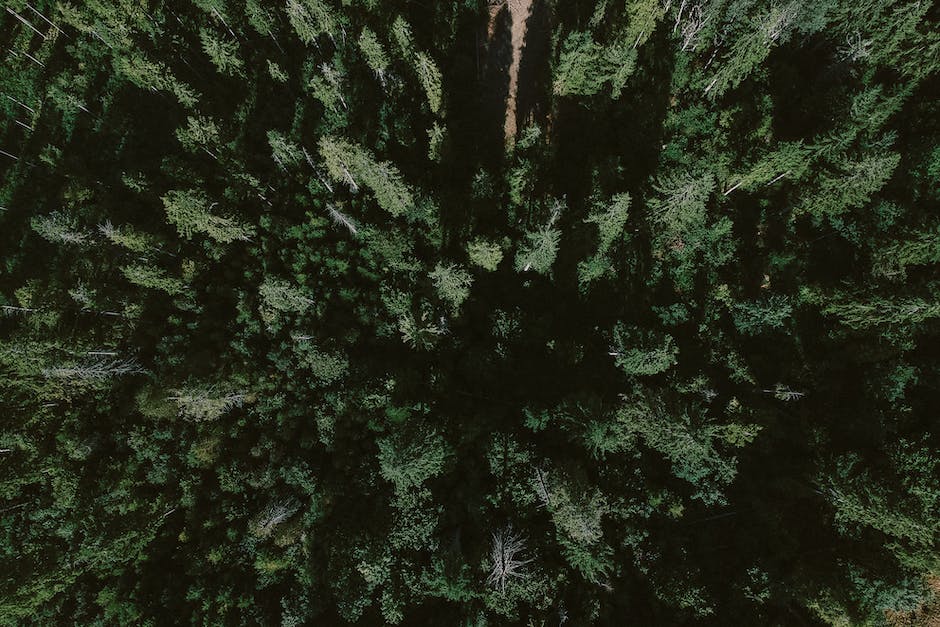In short, the answer is no. Topping a pine tree is not advised for a number of reasons. For one, pine trees are not like other trees where topping them simply results in the tree regrowing from the cut. When you top a pine tree, you are essentially damaging the tree beyond repair and it will likely die as a result. Additionally, pine trees that have been topped are more susceptible to wind damage and can be a safety hazard if they are located near homes or other buildings.
A pine tree can be topped, but doing so may damage the tree. Topping involves removing the top of the tree, which can leave the tree vulnerable to disease and pests.
How do you reduce the height of a pine tree?
One way to reduce the size of a pine tree is to cut the central leader back to 8 to 12 inches from a north-facing bud. You can also trim branches just below the central leader to make them 4 to 6 inches shorter than the leader.
Pruning is a necessary step in keeping a pine tree healthy. Dead or infected branches should be cut off to improve the health of the tree. However, don’t over prune the pine tree. If a branch is too thick, thin out the stems on the branch. Avoid removing a whole branch unless it is your desire.
Can you limit the height of a pine tree
Pruning a pine tree will not stop its growth, but it will slow the rate of growth. You can control how it grows by creating a more compact growth pattern.
If you have a pine tree that is growing too tall, you can use pruning to slow the growth rate. In the spring, check the tree for new growth and prune accordingly. This will keep the tree small for as long as possible.
What happens if you cut the top off a pine tree?
The practice of topping trees to control size or growth is not justified, as it opens the tree to internal decay, disease or damaging insects. The removal of the upper main stem also removes the most productive portion of the tree. Large evergreen trees do not respond well to topping.
If you have a tree that is not too badly damaged, it is best to remove it during the dormant season, between late winter and early spring. This is because the tree will be leafless and lighter, making it much easier for a certified arborist to cut and handle the branches.
How much of a pine tree can you prune?
Pruning is an important part of keeping your pine tree healthy and vigorous. The branches should be kept about 6 inches shorter than the center trunk. This will allow for better air circulation and prevent branches from rubbing against each other and causing damage. The top part of your pine tree is called the crown. When your tree is young, you should cut away about a third of the crown every year. This makes for thicker growth and greener foliage.
You can’t “stop” trees from growing tall by topping them. If you do succeed, you have killed them. A tree’s leaves manufacture its food (photosynthesis), and repeated removal of a tree’s food source literally starves the tree over time.
How much can you cut off a tree without killing it
Pruning your tree correctly is important to maintain its health – too much pruning can be stressful and even kill your tree. Try to only trim 25% of the canopy at one time to avoid damaging it.
Topping a pine will permanently damage the tree and ruin its distinctive conical shape. needles and neat, cone-shaped form. Topping should therefore never be done to a pine, or any other coniferous tree.
Do tall pine trees have deep roots?
Pine trees have different root systems based on the species and soil type. Most pine species have deep taproots, but mugo pines don’t. Larger species, such as a 100- to 150-foot white pine, can have more extensive roots compared to dwarf varieties. In different soils, roots may grow differently as well.
Pine trees have a deep tap root and a shallower root system. The roots can extend away from the tree at a distance as much as twice the height of the tree. This allows the tree to anchor itself securely and provides an extensive root system to absorb water and nutrients.
How do you prune and shape a pine tree
Pine trees are known for their traditional cone shape, which is why it’s important to get a young pine tree to grow into that shape. To do this, you need to cut the side branches 4 to 6 inches (10 to 15 centimeters) shorter than the center trunk. Allow the lower branches to remain longer than those higher up. If you do this regularly, the tree will maintain its shape.
In pine plantations, a combination thinning (row thinning and selective thinning) is best. Every third, fourth or fifth row should be removed and intermediate rows thinned by individual selection. Thinning pine stands can have biological and longterm economic benefits.
How long do pine trees live?
Pine trees are some of the longest-lived organisms on the planet, with some individuals living for thousands of years. The Great Basin bristlecone pine is the longest-lived species, with one individual living for over 4,800 years. These trees are incredibly resilient and have a wide range of adaptations that allow them to thrive in different environments.
If you cut the top half off of a pine tree, yet leave half of its foliage, the tree will survive. It will be a very distorted andattractive pine tree, and the tree will attempt to recover its upward dominant leader by redirecting one or more of the top remaining branches to become the new lead branch.
Do pine trees fall over
Pine trees are more likely to come down in high winds because their canopies are always present and are thick and heavy. This creates a “windsail” effect that makes the trees more likely to topple over.
Once a tree has been cut, the roots cannot grow anymore because the leaves are necessary to provide the food to fuel root growth. This may be a problem for some people, but it is not a big concern.
What are the negatives of pine trees
Pine trees play a significant role in air pollution. They produce gases that react with airborne chemicals, resulting in the formation of tiny, invisible particles that contribute to the haziness of the air. In addition, pine trees release volatile organic compounds (VOCs) which are precursors to the formation of ozone, a major pollutant.
Pine trees are an excellent aid in controlling soil erosion. The pine tree’s roots help to hold the soil in place, making it less likely for erosion to occur. Pine trees are a popular choice for controlling erosion because they are hardy and can survive in most soil conditions. When selecting a pine tree for erosion control, it is important to choose a species that is native to the area. This will help ensure that the tree is able to thrive and provide the best possible erosion control.
Final Words
It is not recommended to top a pine tree as it can result in uneven growth, weak branches, and an increased risk of disease and pest infestation.
While pine trees can be topped, it is not recommended as it can lead to problems such as dieback, stress, and weak branches. Topping also removes the natural shape of the tree and can make it more difficult to manage.
I’ve always been drawn to trees.
As a kid, I spent most of my free time outside, climbing, exploring, and trying to figure out the names of the trees around me.
That early curiosity eventually led me to study arboriculture and horticulture at Michigan State.
Later, I completed a degree in forestry at the University of Michigan.
I’ve been working in tree care and education ever since.
These days, I enjoy helping people learn more about the trees in their own backyards.
How they grow, how to care for them, and why they matter.
You don’t need to be an expert to appreciate trees.
A little curiosity goes a long way.
